If you want to know about the vastu for internal planning of house or design guidelines for natural ventilation or natural ventilation and air movement concept site climate, please click the link.
Natural ventilation is a method of bringing fresh air into an indoor space without the use of mechanical systems, such as air conditioning or fans. This can be achieved through the use of passive design techniques, such as the strategic placement of windows, doors, vents, and other openings that can facilitate the movement of air through the building.
The rate of ventilation by natural means through windows or other openings depends on,
a) direction and velocity of wind outside and sizes and disposition of openings (wind action); and
b) convection effects arising from temperature of vapour pressure difference (or both) between inside and outside the room and the difference of height between the outlet and inlet openings (stack effect).

1) What is natural ventilation
- Natural ventilation is the process of supplying and removing air through a space by natural means it can be achieved with open able windows or vents.
- Natural ventilation and air movement can be simply achevied by ‘structural controls’ as it does not depends on any form of external energy supply or mechanical installation.
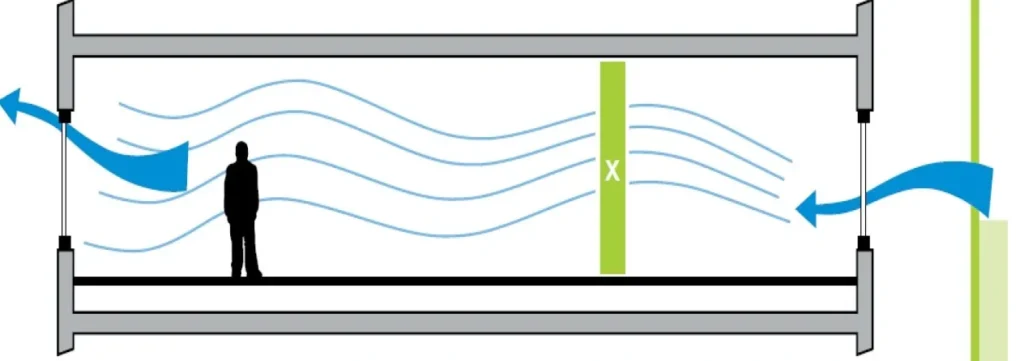
2) Why natural ventilation
There are several benefits of natural ventilation. First and foremost, it is an energy-efficient way of cooling a building, as it does not rely on electricity to operate.
Natural ventilation can also improve indoor air quality by removing stale air and pollutants from the building. Additionally, it can create a more comfortable indoor environment by reducing humidity and the temperature.

- The purpose of providing natural ventilation is to achieve maximum human comfort in indoor by utilizing maximum natural energy and resources.
3) Stack effect
- Stack effect depends on thermal forces and difference in temperature.
Reason of stack effect
- pressure difference between the outside air and the air inside the building caused by difference in temperature
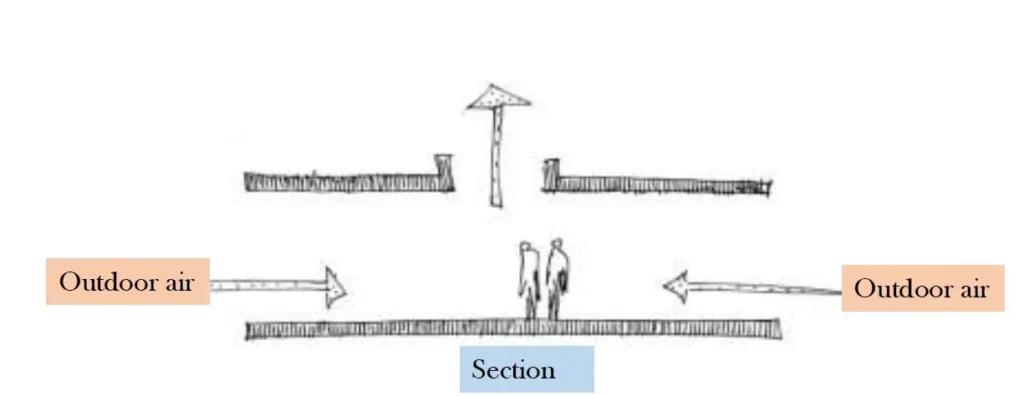
Stack ventilation sections

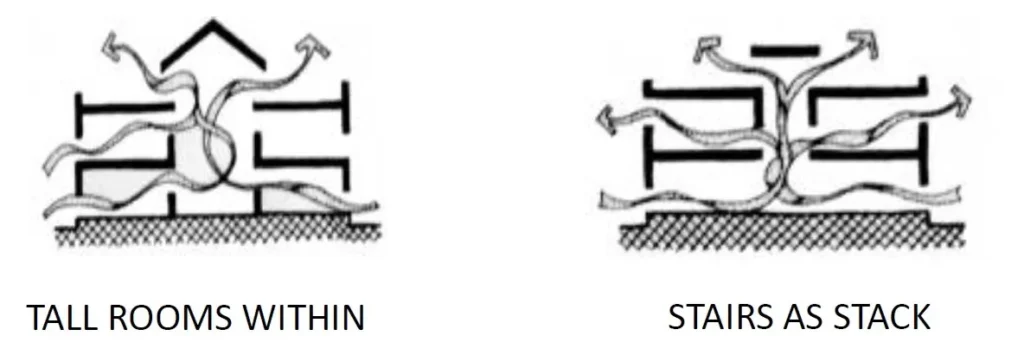
4) Wind tower
- Air enters in wind tower through openings-cooled down-becomes heavier and sinks down ( presence of air movement)
- After whole day air exchange –tower becomes warm in the evening.
- Tower walls absorbs heat during daytime and relases at night warming cool night air at night.

Different types of wind towers
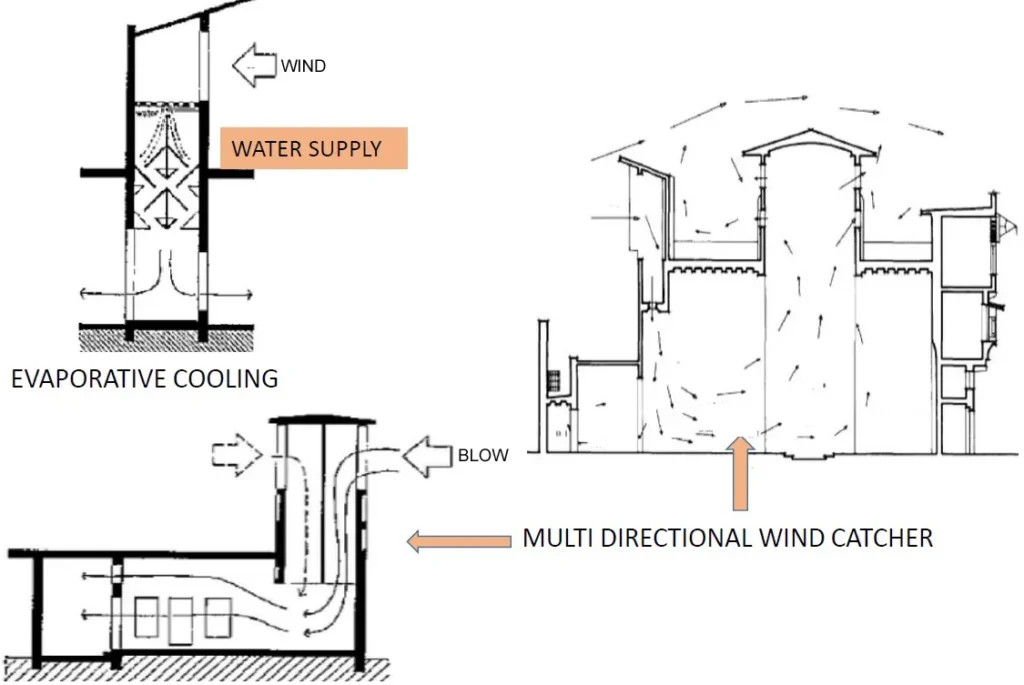
5) Courtyard effect
- Due to incident solar radiation in a courtyard, air gets warmer and rises , cool air from ground level flows through the lower openings.
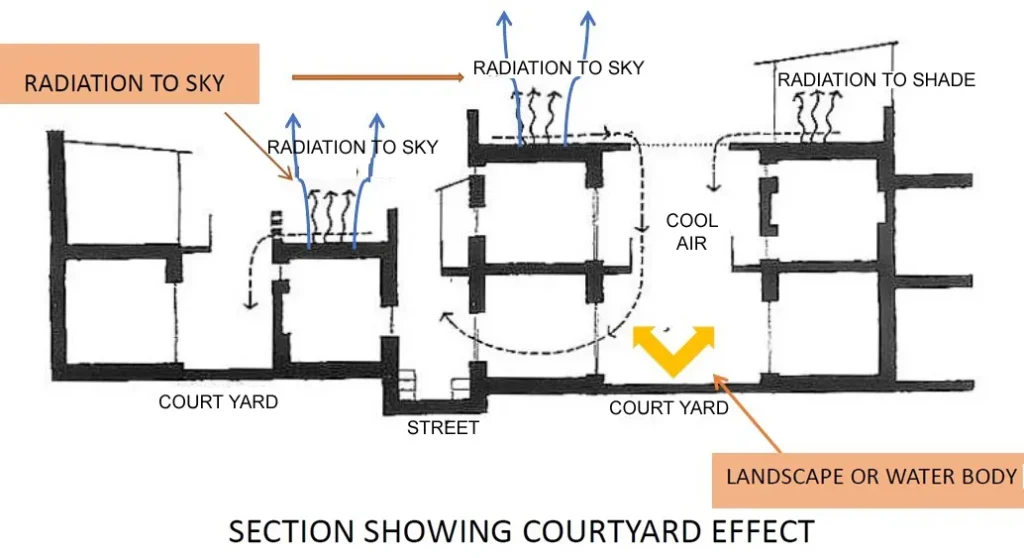
Courtyards in modern buildings

6) Important points
- Ventilation of Non-Industrial Buildings Ventilation in non-industrial buildings due to stack effect, unless there is a significant internal load, could be neglected, except in cold regions, and wind action may be assumed to be predominant.
- In hot dry regions, the main problem in summer is to provide protection from sun.s heat so as to keep the indoor temperature lower than those outside under the sun. For this purpose windows and other openings are generally kept closed during day time and only minimum ventilation is provided for the control of odours or for removal of products of combustion.
- In warm humid regions, the problem in the design of non-industrial buildings is to provide free passage of air to keep the indoor temperature as near to those outside in the shade as possible, and for this purpose the buildings are oriented to face the direction of prevailing winds and windows and other openings are kept open on both windward and leeward sides.
- In winter months in cold regions, the windows and other openings are generally kept shut, particularly during night; and ventilation necessary for the control of odours and for the removal of products of combustion can be achieved either by stack action or by some infiltration of outside air due to wind action.
- Ventilation of Industrial Buildings In providing natural ventilation of all industrial buildings having significant internal heat loads due to manufacturing process, proper consideration should be given to the size and distribution of windows and other inlet openings in relation to outlet openings so as to give, with due regard to orientation, prevailing winds, size and configuration of the building and manufacturing processes carried on, maximum possible control of thermal environment.
- In the case of industrial buildings wider than 30 m, the ventilation through windows may be augmented by roof ventilation.
However, it is important to note that natural ventilation may not be suitable for all types of buildings or climates. In some cases, mechanical ventilation may be necessary to ensure adequate indoor air quality and thermal comfort.